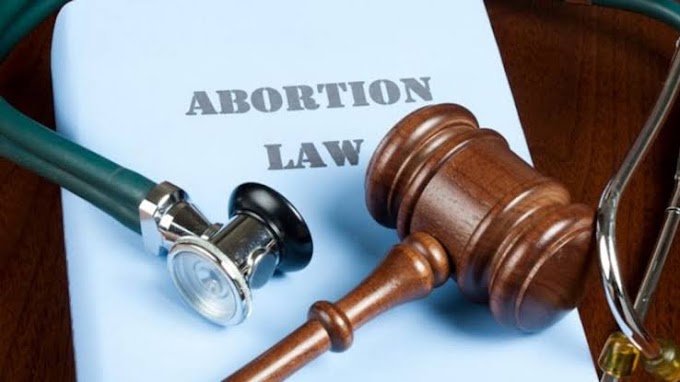BASIC STRUCTURE DOCTRINE
Author:- VISHNU KUMAR PATIDAR, A Student of SVKM'S PRAVEEN GANDHI COLLEGE OF LAW MUMBAI
The basic structure doctrine is a legal doctrine that holds that a constitution of a sovereign state has certain essential features that cannot be erased or changed by the legislature. It is a doctrine that has been developed by the courts in a number of countries, including India, Bangladesh, Pakistan, and Uganda.
The basic structure doctrine in India was first enunciated in the landmark case of **Kesavananda Bharati v. State of Kerala** in 1973. In this case, the Supreme Court of India held that Parliament has the power to amend the Constitution under Article 368, but this power is not unlimited. Parliament cannot amend the basic structure of the Constitution.
The basic structure doctrine is an important safeguard against the tyranny of the majority. It prevents the ruling party from using its majority in Parliament to amend the Constitution in a way that would undermine its basic principles.
Recently on Friday The 2023 centenary Ram Jethmalani Memorial Lecture Series is finalized. The event, organised by the Sunday Guardian Foundation, was presided over by Chief Justice of India DY Chandrachud. Law minister Arjun Ram Meghwal and Attorney-General for India R Venkataramani were the guests of honour. On the panel debating whether the basic structure doctrine has served the nation well were Nariman, forman chief justice of india Dipak Mishra, Thuglak editor S gurumurthy, and senior supreme court lawyer shyam divan.
The CJI chose not to express his views on the doctrine, stating that he would refrain from voicing his opinions on public platforms and would instead allow his judgments to address the matter.
The basic structure doctrine has been applied by the Supreme Court of India in a number of cases to strike down constitutional amendments that it found to be violative of the basic structure. For example, in the case of **Indira Nehru Gandhi v. Raj Narain** (1975), the Court struck down the 39th Amendment, which had sought to immunize the Prime Minister from judicial review. In the case of **Minerva Mills v. Union of India** (1980), the Court struck down parts of the 42nd Amendment, which had sought to dilute the power of the Supreme Court to strike down constitutional amendments.
Senior Advocate Fali S Nariman said that the basic structure doctrine is here to stay.
He said the doctrine is closely tied to a specific Article of the Constitution, namely Article 368, which is the sole Article addressing substantial amendments to the constitution.
He also said that the doctrine of basic sructure has been used very sparingly by the Supreme Court to strike down Constitutional amendments.
Former Chief Justice of India (CJI) Dipak Misra vehemently defended the doctrine.
"The answer is a capital YES, it has served the nation well. It has served the nation and saved and stabilised constitutional democracy," he said. He added that the origin of the doctrineis flawless and no advocate worth his salt would term it vague.
Attorney General R Venkataramani said that the basic structure doctrine is all about liberty.
He pitched for a National Institute for Criminal Justice Administration in the country adding that if justice does not ensue for the weakest sections then it loses its meaning.
Divan explained that the notion of basic structure started with a German professor Dietrich Conrad when he delivered a lecture at Banaras Hindu University where he propounded a theory that some things in the Constitution are “immutable or are unchangeable”.
Divan said though there are several parts in the Constitution which can be removed or amended but Part III or fundamental rights “must hold out if we are to preserve our democracy”.
Divan said the basic structure doctrine is really about protecting the “essential identity of the Constitution”.
He added it has been of “tremendous utility” in India in preserving crucial aspects of the Constitution like the scope of judicial review and the power of court to strike down a legislation, which otherwise falls foul of constitutional provisions.
Gurumurthy, the editor of weekly magazine Thuglak, said his view on the subject is a "dissenting view" and called for a relook at the basic structure theory.
He said that from a concrete position of "unamendability" of Part-III, we have gone to an “abstract position of unamendability of any part of the Constitution”.
On the National Judicial Appointments Commission (NJAC) case, Gurumurthy said NJAC could have been read down saying that two members of the judicial system cannot be overruled.
Gurumurthy said the framers of the original Constitution had kept in mind that the fundamental rights of the people should not be affected whatever be the system of governance.
However, he said the basic structure theory brings about a situation where the judiciary will “decide the system of governance also”. He said it was not the intention of the original framers of the Constitution.
Hence the basic structure doctrine is an important part of the Indian constitutional system. It has helped to protect the basic principles of the Constitution and to uphold the rule of law.




![Freedom of Speech in India [Indian Supreme court and Law of Sedition]](https://blogger.googleusercontent.com/img/a/AVvXsEiGLLUmLKq5Da6xDZplasOZHKRj-jOhWPkoeuy0_Eq757tUpOiHz-xooXwIlAjF0-hmBfi-TtMIv6on_sVgBXVq4wbWwnbsqLOcNX22S8C2aSq-ZuK3vn9wWAx8tXByYOBfwc0hs6b8RJV84YNFG2greouGKjup6g8kN-xVlchW33VHdSSmrhLC1BUEVbGp=w680)





